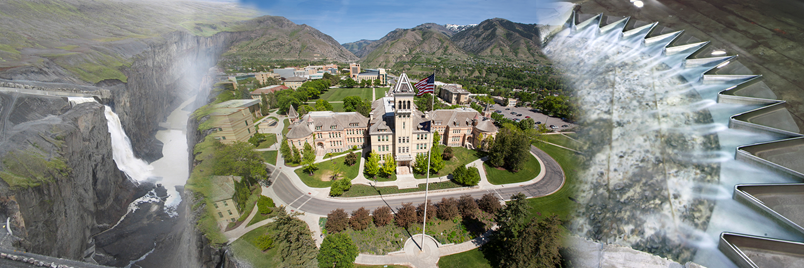Location
Utah State University, Logan, Utah, USA
Start Date
6-17-2012 12:00 AM
End Date
6-20-2012 12:00 AM
Description
ABSTRACT: The increase in predicted extreme flood event magnitudes has required the modification of many existing reservoir spillway flow control structures with more hydraulically efficient designs. The arced labyrinth is a relatively new, highly efficient, nonlinear weir design specifically applicable to reservoir applications. Flow characteristics of eleven laboratory-scale arced labyrinth weir geometries were studied at the Utah Water Research Laboratory with sidewall angles α = 12° and 20°. Rating curves, flow conditions, and discharge efficiencies were documented for each configuration to increase the hydraulic database of arced labyrinth weirs.
Arced labyrinth weirs with α = 20° were found to have discharge efficiencies 5 to 10% higher than α = 12° weirs. They also generated more flow anomalies (i.e. unstable nappe aeration) due to approach flow interaction with cycle orientation and weir position. The hydraulic efficiency of projecting, traditional labyrinth weirs, as a function of abutment wall geometry, was also evaluated. No standardized design method currently exists for arced labyrinth weirs, and relatively little is known about their hydraulic characteristics; this discussion increases the hydraulic information available for the arced labyrinth weir design.
Arced Labyrinth Weir Flow Characteristics
Utah State University, Logan, Utah, USA
ABSTRACT: The increase in predicted extreme flood event magnitudes has required the modification of many existing reservoir spillway flow control structures with more hydraulically efficient designs. The arced labyrinth is a relatively new, highly efficient, nonlinear weir design specifically applicable to reservoir applications. Flow characteristics of eleven laboratory-scale arced labyrinth weir geometries were studied at the Utah Water Research Laboratory with sidewall angles α = 12° and 20°. Rating curves, flow conditions, and discharge efficiencies were documented for each configuration to increase the hydraulic database of arced labyrinth weirs.
Arced labyrinth weirs with α = 20° were found to have discharge efficiencies 5 to 10% higher than α = 12° weirs. They also generated more flow anomalies (i.e. unstable nappe aeration) due to approach flow interaction with cycle orientation and weir position. The hydraulic efficiency of projecting, traditional labyrinth weirs, as a function of abutment wall geometry, was also evaluated. No standardized design method currently exists for arced labyrinth weirs, and relatively little is known about their hydraulic characteristics; this discussion increases the hydraulic information available for the arced labyrinth weir design.


